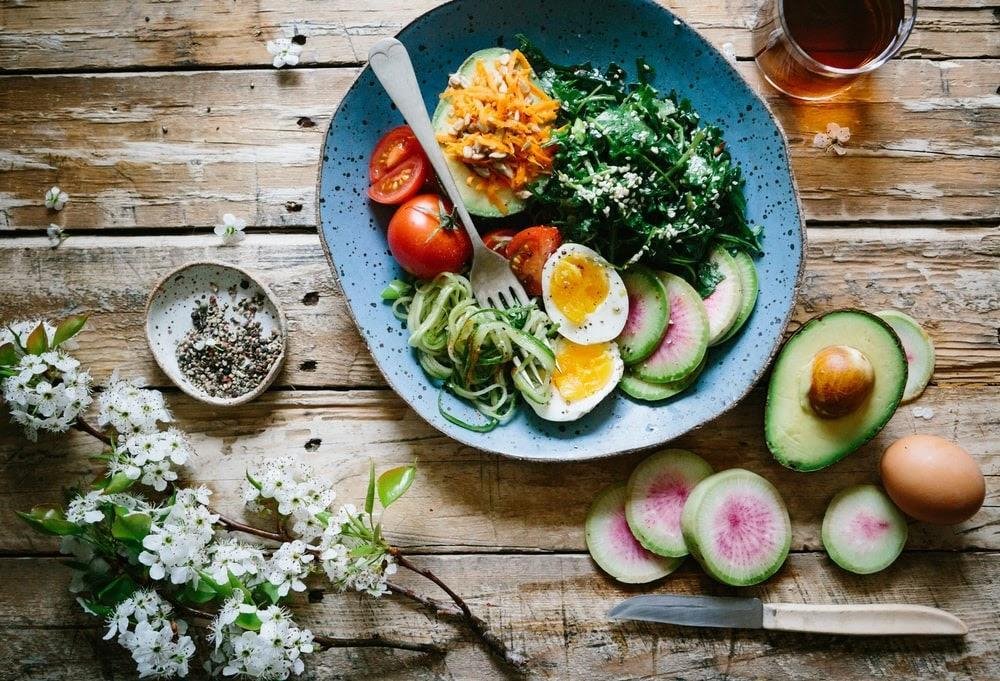Planning Out Your Meals
Planning Out Your Meals
I’m a big advocate for learning how to make food work for you and not against you and that’s part of what we’re going to be talking about today. The basics are two terms known as macros and kilocalories. Your macronutrients are essentially your carbs, protein, and fat. Carbs and proteins both have four calories per gram while fat has nine calories per gram.
Secondly, an important thing to note if you’re going to be consuming alcohol. As soon as you take a sip of alcohol, that is the first thing that your body works to metabolize. And I’m going to give you a really good example of how that works. But if there’s no alcohol involved every time you eat something, carbs are the first immediate energy that your body gets and then protein, which is a little bit more sustained, and then fat.
I have also created a typical eating pattern for a weekday based on everything people have told me over the years. Things they either used to eat before they started losing weight or became a typical way of eating once they lost the weight. For example, for breakfast, a meal might consist of two eggs, one slice of rye, two teaspoons of butter on the bread, a cup or eight ounces of orange juice, and coffee with two tablespoons of half and half. This breakfast equals 525 calories. Then, lunch might be something like three cups of mixed salad with five ounces of grilled chicken breast and three tablespoons of light Italian dressing(Total=450 calories). Later, dinner might be a margarita, two grilled shrimp tacos, three tablespoons of guac, and a cup of mixed rice and black beans(Total=1,195 calories). So the total for the day would be 2,170 calories.
Now to understand the breakdown and how your body metabolizes this, we’re going to go look at height and weight. First, we have a 50-year-old female, she’s 5’5’’ and 175 pounds. She works a 45 hour week, mostly computer-based as most of us do nowadays. She sleeps about six hours on a weekday and about eight hours on a weekend, and she has little to no additional exercise. Her basal metabolic rate would be 1,415 calories that she can consume. If we then
Subtract her breakfast calories of 525 calories, that leaves 890 for the rest of the day. Then, subtracting her lunch of 450 calories, she’s finally left with 440 calories for dinner. With that remaining 440 calories, the first thing that’s going to be metabolized will be the margarita alcohol at 500 calories. By just having that margarita she will already be over her calories for the day by 60, while still not haven’t eaten and metabolized the grilled shrimp tacos, the guac, or the rice and beans. Now, what that means is with her BMR, her metabolism, and her caloric intake for the day, she’s eating 755 calories that she will not metabolize and ultimately will get stored as fat.
The important thing to understand in this example is the idea of how when we consume alcoholic drinks, it often tends to be later in the day. At this point, we’ve already started to metabolize and use up the calories that we had earlier in the day. In that way, we really have to be thoughtful in how we plan our days, especially as we get to sustaining our weight loss. It’s very important to loosely plan out your day around your set amount of calories, so that you would have less calories earlier in the day where you can have enough time to burn the majority of them.
In the example of this woman, she had little to no exercise added. Had she been exercising routinely, doing things such as cardio and weight-bearing throughout the week, thereby burning more calories, she might have been able to get to the point where her metabolism could burn these 755 calories even if she wasn’t exercising that day. To put it in another way, you build up a bank of calories when you exercise that would help you be able to have a day like this, which is not that unusual in its design, and not have a fat weight store and gain as a result of it. The reason for providing you with this background and example is so that, as you’re looking for, creating, and redesigning recipes during the Sustaining Phase, you’re eating based on your basal metabolic rate. You will see that it really does make a difference which items you choose to eat.
Lastly, if you’re looking for a little extra guidance when drawing out your daily meal plans, a helpful resource you can use is a recipe calculator. For instance, MyFitnessPal™ is not only very easy to use but you can use it without needing to sign up or pay for an account. They also have a great bank of foods that are able to be saved to your personal recipe box or that you can share with others.
*Jennifer Katafigiotis, NSWM Nutrition/Behavioral Class

